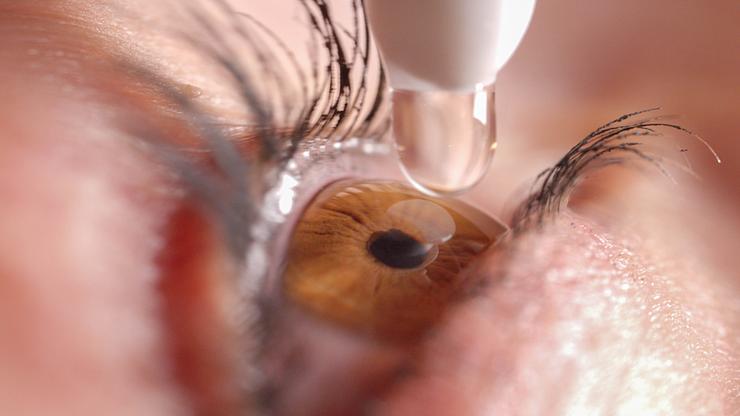Medically reviewed by Dr. Danielle Campbell
From the FYidoctors - Comox Valley
Dry Eyes: Symptoms and Effective Treatments

Dry eyes, is a common discomfort that can interfere with daily activities. Symptoms can include burning, stinging, waterying, or a gritty sensation. This condition often stems from inadequate tear production or rapid tear evaporation, leading to irritation and blurred vision. Fortunately, effective treatments are available, ranging from over-the-counter artificial tears to prescription medications that reduce inflammation and boost tear production. Lifestyle adjustments, such as using humidifiers, wearing protective eyewear, and reducing screen time, can also help manage symptoms. If persistent, it’s wise to consult an eye care professional to explore tailored treatment options and ensure optimal eye health.
What is Dry Eye Syndrome?
Dry eye syndrome, also known as ocular surface dysfunction, occurs when your eyes don't produce enough tears or when the tears evaporate too quickly, leaving your eyes without proper lubrication. This can lead to a range of symptoms, including:
- Stinging, burning, or scratchy sensations in the eyes
- Redness and irritation
- Blurred vision or eye fatigue
- Sensitivity to light
- Watering eyes
- Difficulty wearing contact lenses
Tears play a crucial role in maintaining eye health and clear vision. They help to:
- Lubricate and nourish the eye surface
- Wash away debris and protect against infection
- Provide a smooth surface for clear vision
When tear production is insufficient or the tears are of poor quality, these functions are compromised, leading to the discomfort and vision problems associated with dry eye syndrome.
Recognizing the Symptoms of Dry Eyes
Dry eye syndrome can manifest in various ways, and recognizing the symptoms is the first step in finding relief. The most common signs of dry eyes include:
- A scratchy or gritty feeling, as if there's sand or debris in your eyes
- Burning or stinging sensations
- Redness and inflammation
- Sensitivity to light, particularly in bright environments or when looking at screens
However, some symptoms may be less obvious. For example, you might experience:
- Blurred vision that comes and goes, especially when reading or using digital devices
- Difficulty wearing contact lenses, as they may feel uncomfortable or cause irritation
- Watery eyes, which can be a paradoxical response to dryness as your eyes attempt to compensate for the lack of moisture
- Eye fatigue or strain, particularly after prolonged visual tasks
If you experience any of these symptoms consistently, it's essential to consult with an eye care professional. They can help determine the underlying cause of your dry eyes and recommend appropriate treatment options.
Understanding the Causes of Dry Eyes
Age is a significant factor in the development of dry eyes, as tear production naturally decreases over time. This is particularly true for older adults and post-menopausal women, who may experience hormonal changes that affect tear production and quality. In fact, studies show that up to 30% of people over 50 experience dry eye symptoms.
Environmental factors also play a crucial role in the onset and exacerbation of dry eyes. Exposure to smoke, wind, dry air, and air conditioning can cause tears to evaporate more quickly, leading to dryness and irritation. Additionally, prolonged screen time and insufficient blinking can contribute to dry eyes, as we tend to blink less frequently when focusing on digital devices.
Did You Know? Certain medications, such as antihistamines, antidepressants, and birth control pills, can also contribute to dry eyes by reducing tear production or altering tear composition.Other factors that may increase the risk of developing dry eyes include:
- Autoimmune disorders like Sjögren's syndrome and rheumatoid arthritis
- Vitamin A deficiency
- Wearing contact lenses for extended periods
- Previous refractive eye surgeries, such as LASIK
If you suspect that your environment or lifestyle may be contributing to your dry eye symptoms, talk to your eye doctor about potential solutions. They can help you identify triggers and develop a personalized plan to manage your symptoms.
How to Diagnose Dry Eyes
If you suspect you have dry eyes, it's essential to consult with an eye doctor for a comprehensive evaluation. During the exam, your optometrist will assess your eye health and perform specific tests to measure tear production and quality.
One common test, called the Tear Breakup Time (TBUT) test, evaluates how quickly your tears evaporate by measuring the time it takes for dry spots to appear on your cornea after blinking. Your eye doctor may also use special dyes, to highlight any damage to the surface of your eye caused by dryness. This can help determine the severity of your condition and guide treatment decisions.
It's crucial to undergo a professional evaluation, as dry eyes can sometimes be a symptom of underlying health conditions, such as Sjögren's syndrome, thyroid disorders, or certain autoimmune diseases. By evaluation your eye and teat film your optometrist can develop a tailored treatment plan to address your specific needs and provide relief from dry eye symptoms.
Effective Treatment Options for Dry Eyes
There are many treatment options available for dry eyes, ranging from over-the-counter solutions to prescription medications and in office treatments. One of the most common and accessible treatments is the use of artificial tears or lubricating eye drops. These drops help supplement the natural tear film and provide temporary relief from dryness, irritation, and discomfort.
For more severe cases of dry eyes, your eye doctor may recommend prescription medications such as cyclosporine (Restasis/Cequa) or lifitegrast (Xiidra). These medications work by reducing inflammation in the eye and stimulating tear production, providing longer-lasting relief from dry eye symptoms.
In addition to medical treatments, making lifestyle adjustments can also help alleviate dry eye symptoms. Using a humidifier in your home or office can help maintain a more comfortable level of humidity, reducing the evaporation of tears. It's also essential to avoid direct air flow from fans or air conditioning units, as this can further dry out your eyes.
There are also in office treatment options for ocular surface dysfunction. These treatments include lid debridement (microblepharoexfoliation), gland expression (manual and thermal expression), IPL (intense pulsed light) and photobiomodulation. Your optometrist may offer these advanced treatment options, or can refer you to a dry eye center.
Did You Know? Some contact lenses, are specially designed to help maintain moisture and comfort for those with dry eyes. Talk to your FYidoctors optometrist about contact lens options that may be suitable for your needs.Preventive Measures to Avoid Dry Eyes
Prevention is key when it comes to managing dry eyes. One way to prevent dry eyes is to reduce screen time and take regular breaks to blink and rest your eyes. The 20-20-20 rule is a helpful guideline: every 20 minutes, take a 20-second break and look at something 20 feet away. This allows your eyes to relax, encourage blinking and helps prevent digital eye strain, which can exacerbate dry eye symptoms.
Staying hydrated, and not over caffeinated is also crucial for maintaining healthy eyes. Drink plenty of water throughout the day to keep your body—and your eyes—well-hydrated. When spending time outdoors, always wear sunglasses to protect your eyes from harsh winds, dust, and UV rays, which can contribute to dry eyes. Look for sunglasses that offer 100% UV protection and wrap around your eyes for maximum coverage.
Pro Tip: If you experience dry eye symptoms in the spring, try using a cool mist humidifier in your home or office to add moisture to the air and help alleviate dryness and irritation.FAQ
What is the best treatment for dry eyes?
How can I stop my eyes from being dry?
What is the main cause of dry eyes?
Can dry eyes affect your vision?
How do you live with chronic dry eyes?
How to reduce dry eyes naturally?
Do dry eyes make you tired?

